Nighbor was then signed by the Toronto Blueshirts of the National Hockey Association for their debut season, the club that would eventually evolved into today's Toronto Maple Leafs. Nighbor would lead the club in scoring with 25 goals in 19 games, good for fourth place in the NHA, which brought the attention of Lester and Frank Patrick, who were the owners of the Pacific Coast Hockey League.
The PCHL was in their second season and were directly competing with the NHA for the most talented players, and Nighbor was lured westward to join Frank's Vancouver Millionaires, where he joined the likes of future Hall of Famers Cyclone Taylor and Didier Pitre. After scoring 10 goals in 11 games in 1913-14, Nighbor would increase that total to 23 in the 17 games played in 1914-15, equal with Taylor for second on the club in goals.
While Nighbor was known as an excellent defensive forward and a master of the poke check, he really found his offensive game in 1916-17 when he cut loose with 41 goals and 51 points in just 19 games to lead the NHA in scoring.
While behind the scenes maneuvering would bring an end to the NHA and give rise to today's National Hockey League for the 1917-18 season, it would remain business as usual on the ice for Nighbor and the Senators, aside from an injury which would limit him to just 10 games. He would maintain his scoring prowess, totaling 11 goals and 19 points in those 10 games.
Despite 2 goals by Nighbor in Game 4, the Metropolitans evened the series at two games each. The deciding Game 5 went to Ottawa 6-1, with Nighbor scoring the final goal on his way to leading the series in goals with 6 as the Senators would win their first Stanley Cup as members of the NHL and first since 1911.
Nighbor's game would shift to a more defensive role after the 1920-21 season and his contributions would help the Senators return to the Stanley Cup Finals once again in 1923, this time defeating the Edmonton Eskimos of the Western Canada Hockey League to win the cup for the third time in four seasons.
Nighbor would contribute 11 goals in 1923-24 and 12 more in 1925-26, his final two seasons with 10 goals or more.
Despite his reduced offensive contributions, Nighbor's value as an all-around player was recognized following the 1923-24 season when he was named the first winner of the Hart Trophy as the NHL's Most Valuable Player.
He again was recognized for his style of play and respect among his fans and peers in 1925 when he was invited to Rideau Hall in Ottawa, the official residence of the Governor General of Canada by Lady Byng, the wife of Viscount Byng of Vimy , who showed Nighbor the trophy she intended to donate to the NHL to be give to it's most gentlemanly player and asked him if he thought the league would accept it. When he replied that he thought the league would accept it, she surprised him by awarding him the trophy on the spot.
Following the 1925-26 season, Nighbor was named the winner of the Lady Byng Trophy for the second consecutive year.
He was still not done with collecting silverware though, as the Senators would reclaim the Stanley Cup in 1927, the fourth of Nighbor's with the Senators and fifth of his career when Ottawa defeated the Boston Bruins 2 games to none with a pair of ties in the first Stanley Cup Final contested solely among teams from the NHL.
Nighbor would play two and a half more seasons for the Senators until the now financially struggling club traded him to the Toronto Maple Leafs for the second half of the 1929-30 season, the same franchise he signed with for their inaugural season back in 1912. He would retire following the season with 438 games played between the PCHA, NHA and NHL, with a combined 257 goals and 125 assists for 382 points and four Stanley Cup titles.
Nighbor was elected to the Hockey Hall of Fame in 1947.
Today's featured jersey is a 1927-28 Ottawa Senators Frank Nighbor jersey. Back in the early days of professional hockey, the Senators made it a habit of celebrating their status as World's Champions by wearing a commemorative patch on their jerseys the following season, as was the case in 1921-22, 1923-24 and 1927-28.
The Senators would adopt their classic barberpole look in 1903 and wore it all the way through their final season of 1933-34, with but a few variations along the way, most notably spending a season in vertical stripes in 1910-11 and adding an "O" crest in 1929-30.


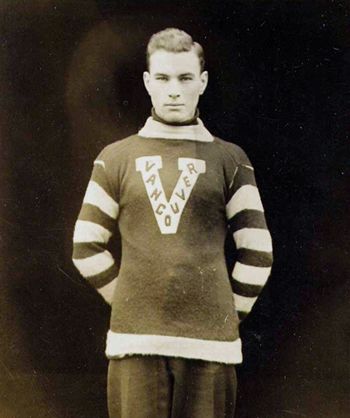

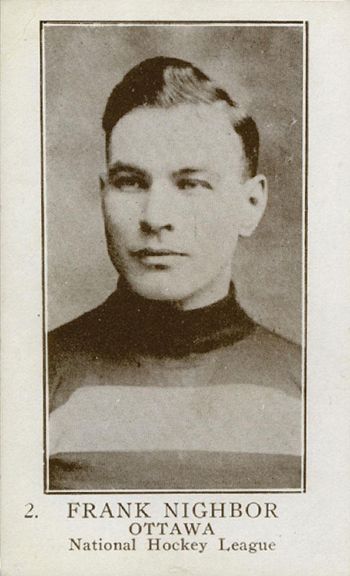

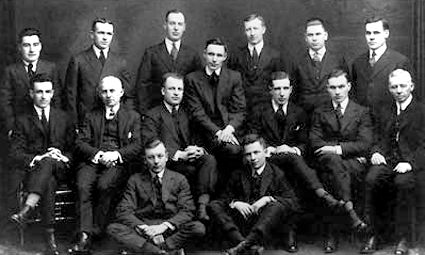
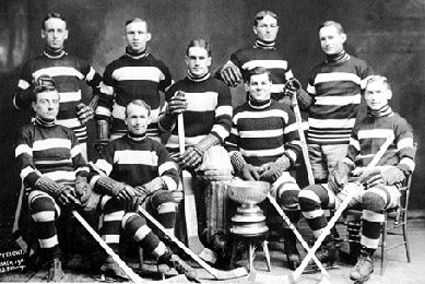

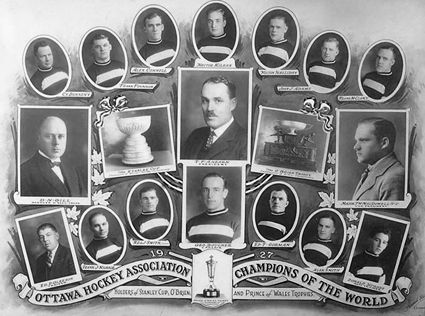











No comments:
Post a Comment
We welcome and encourage genuine comments and corrections from our readers. Please no spam. It will not be approved and never seen.